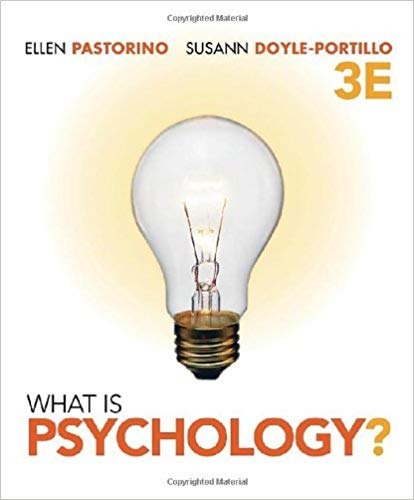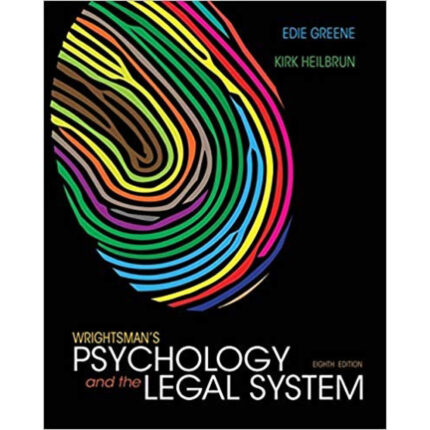Chapter 11 Treatment of Psychological Disorders
1) ________ are professionals with a PhD or PsyD who have also completed a postgraduate internship. They specialize in assessment and treatment of psychological difficulties.
A) Psychoanalysts
B) Psychiatrists
C) Psychiatric social workers
D) Clinical psychologists
Answer: D
Difficulty: 1 Easy Page Ref: 449
Topic: Areas of Specialization
Learning Objective: 36.1: Explain psychodynamic approaches to therapy.
Bloom’s: Remember
APA Outcome: 5.1: Apply psychological content and skills to career goals
Accessibility: Keyboard Navigation
2) ________ are professionals with a PhD or EdD who typically treat day-to-day adjustment problems, often in a university mental health clinic.
A) Counseling psychologists
B) Psychiatrists
C) Licensed professional counselors
D) Psychoanalysts
Answer: A
Difficulty: 1 Easy Page Ref: 449
Topic: Areas of Specialization
Learning Objective: 36.1: Explain psychodynamic approaches to therapy.
Bloom’s: Remember
APA Outcome: 5.1: Apply psychological content and skills to career goals
Accessibility: Keyboard Navigation
3) Professionals with a Master’s degree who provide therapy to individuals, couples, and families and who hold a national or state certification are called
A) counseling psychologists.
B) psychiatrists.
C) licensed professional counselors.
D) psychoanalysts.
Answer: C
Difficulty: 1 Easy Page Ref: 449
Topic: Areas of Specialization
Learning Objective: 36.1: Explain psychodynamic approaches to therapy.
Bloom’s: Remember
APA Outcome: 5.1: Apply psychological content and skills to career goals
Accessibility: Keyboard Navigation
4) Professionals with a Master’s degree and specialized training who usually provide therapy regarding common family and personal problems are called
A) counseling psychologists.
B) psychiatrists.
C) licensed professional counselors.
D) psychoanalysts.
Answer: B
Difficulty: 1 Easy Page Ref: 449
Topic: Areas of Specialization
Learning Objective: 36.1: Explain psychodynamic approaches to therapy.
Bloom’s: Remember
APA Outcome: 5.1: Apply psychological content and skills to career goals
Accessibility: Keyboard Navigation
5) ________ seeks to bring unresolved past conflicts and unacceptable impulses from the unconscious into the conscious, where patients may deal with the problems more effectively.
A) Cognitive therapy
B) Psychodynamic therapy
C) Behavioral therapy
D) Humanistic therapy
Answer: B
Difficulty: 1 Easy Page Ref: 449
Topic: Psychodynamic Therapies
Learning Objective: 36.1: Explain psychodynamic approaches to therapy.
Bloom’s: Remember
APA Outcome: 1.1: Describe key concepts, principles, and overarching themes in psychology
Accessibility: Keyboard Navigation
6) The most common defense mechanism against unacceptable unconscious impulses is
A) dissociation.
B) projection.
C) reaction formation.
D) repression.
Answer: D
Difficulty: 1 Easy Page Ref: 449
Topic: Psychodynamic Therapies
Learning Objective: 36.1: Explain psychodynamic approaches to therapy.
Bloom’s: Remember
APA Outcome: 1.1: Describe key concepts, principles, and overarching themes in psychology
Accessibility: Keyboard Navigation
7) Which of the following statements best expresses the relationship between psychoanalysis and psychotherapy?
A) Psychoanalysis solely employs dream interpretation, whereas psychotherapy solely employs free association.
B) Psychoanalysis involves transference, whereas psychotherapy involves resistance.
C) Psychoanalysis is Freud’s specific version of psychotherapy.
D) Psychoanalysis and psychotherapy are unrelated to each other.
Answer: C
Difficulty: 2 Medium Page Ref: 450
Topic: Psychodynamic Therapies; Psychoanalytic Approach
Learning Objective: 36.1: Explain psychodynamic approaches to therapy.
Bloom’s: Understand
APA Outcome: 1.2: Develop a working knowledge of psychology’s content domains
Accessibility: Keyboard Navigation
8) The goal of ________, which was developed by Freud, is to release hidden thoughts and feelings from the unconscious part of our minds in order to reduce their power in controlling behavior.
A) psychoanalysis
B) aversive conditioning
C) systematic desensitization
D) flooding
Answer: A
Difficulty: 1 Easy Page Ref: 450
Topic: Psychodynamic Therapies; Psychoanalytic Approach
Learning Objective: 36.1: Explain psychodynamic approaches to therapy.
Bloom’s: Remember
APA Outcome: 1.2: Develop a working knowledge of psychology’s content domains
Accessibility: Keyboard Navigation
9) The surface description of a dream is called its
A) latent content.
B) philological content.
C) semiotic content.
D) manifest content.
Answer: D
Difficulty: 1 Easy Page Ref: 450
Topic: Psychodynamic Therapies; Psychoanalytic Approach
Learning Objective: 36.1: Explain psychodynamic approaches to therapy.
Bloom’s: Remember
APA Outcome: 1.1: Describe key concepts, principles, and overarching themes in psychology
Accessibility: Keyboard Navigation
10) The underlying meaning of a dream is called its
A) latent content.
B) philological content.
C) semiotic content.
D) manifest content.
Answer: A
Difficulty: 1 Easy Page Ref: 450
Topic: Psychodynamic Therapies; Psychoanalytic Approach
Learning Objective: 36.1: Explain psychodynamic approaches to therapy.
Bloom’s: Remember
APA Outcome: 1.1: Describe key concepts, principles, and overarching themes in psychology
Accessibility: Keyboard Navigation













Reviews
There are no reviews yet.